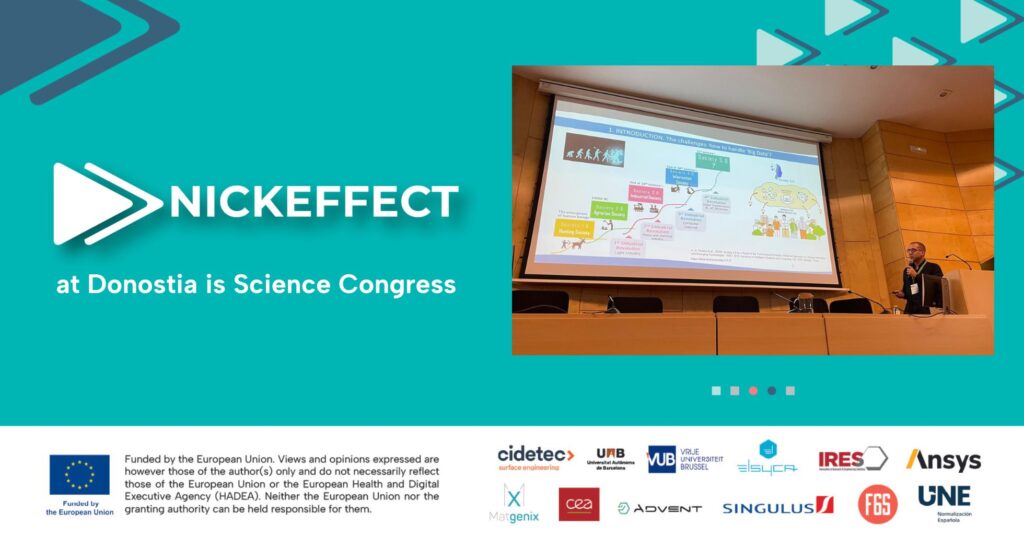Professor Jordi Sort, an ICREA Professor from the Autonomous University of Barcelona (UAB) and a key partner in the NICKEFFECT project, delivered a compelling Plenary Talk at the international conference “Donostia is Science”, held from May 28–30, 2025. The event, proudly co-organised by project coordinator CIDETEC, celebrated the 50th anniversary of the Faculty of Chemistry at the University of the Basque Country (UPV/EHU), a cornerstone of scientific research and innovation in the region.
The Donostia is Science conference brought together a distinguished assembly of scientists and professionals from across Europe and beyond, fostering a vibrant exchange of ideas across diverse research areas, including energy efficiency, biomedical applications, spintronics, catalysis, sustainable materials, polymer science, and neuromorphic computing. Notable attendees included Nobel Laureate Albert Fert, a pioneer in spintronics, and vice-directors from CIDETEC, a leading technological centre renowned for its cutting-edge applied research.
In this dynamic scientific environment, Jordi Sort presented his latest innovative research in a talk titled “Magneto-ionics for Brain-Inspired Memory Devices.” His presentation focused on nitrogen magneto-ionics, a novel approach that leverages the voltage-triggered movement of nitrogen ions to achieve reversible and energy-efficient control over the magnetic properties in transition metal nitrides like CoN, FeN, CoMnN, and FeCoN.
Jordi Sort highlighted that, unlike traditional oxygen-based systems, nitrogen-based magneto-ionics offers significant advantages, including faster switching dynamics, enhanced stability at room temperature, and a more favourable energy profile for future device applications. This innovative work holds substantial implications for the development of next-generation artificial intelligence hardware, specifically in areas such as neuromorphic computing architectures, in-memory processing units, and adaptive synaptic devices. He further elaborated on how, in nanostructured systems like FeCoN nanodisks, voltage-driven nitrogen ion transport can induce transitions between different magnetic states (paramagnetic, single-domain, and analog vortex or “vortion” configurations), enabling tunable magnetic behaviour ideal for multilevel memory and brain-inspired computing.
This significant research was made possible through crucial funding from the NICKEFFECT Project and the REMINDS Advanced Grant, supported by the European Research Council (ERC). Professor Sort emphasized that the conference provided an invaluable platform for exchanging ideas, exploring collaborative opportunities, and reflecting on the evolving role of chemistry, physics, and materials science in tackling global scientific and technological challenges.

